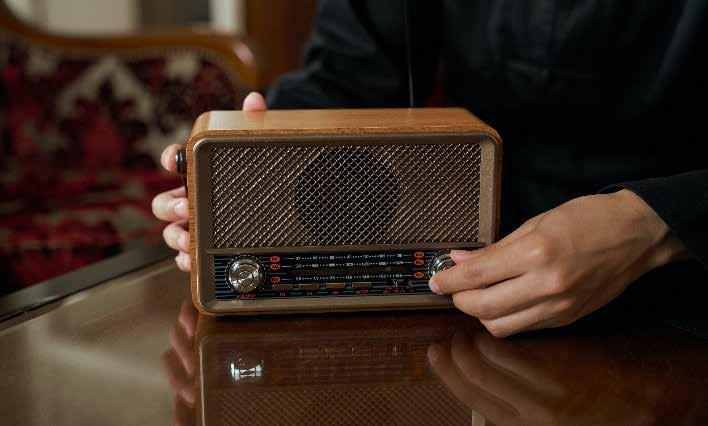
3 minute read
DISCUSS
WHAT IS A PODCAST?
Podcasts are a wide-ranging audio medium that’s difficult to narrow down to just one definition. You can probably find a podcast on every single topic you can think of – from hardcore economics to grooming horses, and everything in between. Some podcasts are mainstream, consisting of friendly banter on films, sports, relationships, and everyday matters. Other podcasts are much more niche, presenting complex and nerdy ideas from across a field of science or knowledge – political, medical, literary, etc. Some podcasts are exquisitely produced with voice actors, music, and sounds effects. Others simply consist of 2-3 hours of unedited conversation.
Advertisement
So, podcasts are many things to many people, which makes it seem a daunting task to try to define the medium. One way to do just that is to look at the technology behind it.
PODCASTS VS. RADIO
Podcasts are somewhat similar to traditional radio but based on a different technology. Radio programmes are transmitted as radio waves in
The Brainstorm
Let’s start off with a quick chat about podcasts: Team up with another student and brainstorm on everything you know about this audio medium. For example: the air and received by us listeners tuning in at regular and specific time slots. They are usually produced professionally to be broadcast by radio stations. In media terms, radio is a so-called push medium, because the programmes are pushed towards us, and we can either receive them or ignore them. In many households, the radio is placed somewhere where several people can hear the programmes – in the kitchen, living room, or in the car: The chatter, news, or music become an easy-to-listen-to (and easy-to-ignore) backdrop.
• How do you access and listen to podcasts?
• Who makes podcasts?
• Do you yourselves listen to any podcasts on a regular basis – what kind, why, and when?
Afterwards, share your findings in class and try to come up with a preliminary answer to the question posed in the chapter headline: What is a podcast?

Podcasts, on the other hand, are a pull medium: They are distributed online in the form of audio files and we listeners choose when to stream and listen to them. We become the active part. We usually enjoy podcasts on our own through earbuds or headphones. By excluding all surrounding noises, we pay more attention to what we hear. Furthermore, since microphones and audio-editing software are quite cheap to come by nowadays, podcasts are produced by professionals and amateurs alike. We can all share our stories, thoughts, and ideas with the world no matter how nerdy the subject matter is. All it takes is time devoted to preparing, recording, editing, and uploading the podcast online.
So, compared to traditional radio, podcasts are a much more democratic medium: There is no broadcasting company or editor to decide on the content – no time restrictions either. Instead, there’s a feeling that the producers and listeners are free to communicate more directly with each other, sharing their personal interest in a topic.
Parasocial Interaction
Successful podcast producers have knowledge or experience about a given topic as well as the passion to talk about it. You can hear it in podcasts that tell stories, podcasts that explore real-life issues, and of course in those podcasts that discuss ideas and opinions. In fact, most podcast producers and hosts end up creating an intimate bond with their listeners through a shared interest in a specific topic or life experience.
In media terms, this bond is called parasocial interaction and can be experienced when we get totally absorbed in the audio experience: We feel that we’re best friends with the people chatting, or we identify 100 % with the main character in the story. This immersion has everything to do with our personal interest in the topic covered in the podcast. It’s triggered by the way many hosts or journalists address us listeners directly, so language plays a key role here, too. Obviously, it is also enhanced through our use of earbuds, and the fact that we get to choose when and where to listen.
The parasocial interaction even continues after we’ve listened to the podcast. We’re often invited to share our thoughts and reactions with other listeners on social media, creating an online community around the podcast. This enhances all of the above, and our correspondence with other fans boosts our listening experience. And because of the parasocial interaction, many podcast producers can present more complex stories, nerdier conversations, and longer-running debates than we find in radio programmes.
The Analytical Method
Of course, the direct communication between producer and listener is reflected in the podcast itself. In fact, it is the number-one focus of our analysis: By examining the way a podcast tells a story or presents an idea, we can learn a lot about the producer of the podcast and their intentions, as well as the listener and their reactions. This method can be applied to a wide range of media, but when it comes to podcasts, we’re specifically interested in the voices, music, sounds, and editing. That’s the primary purpose of our podcast analysis.




